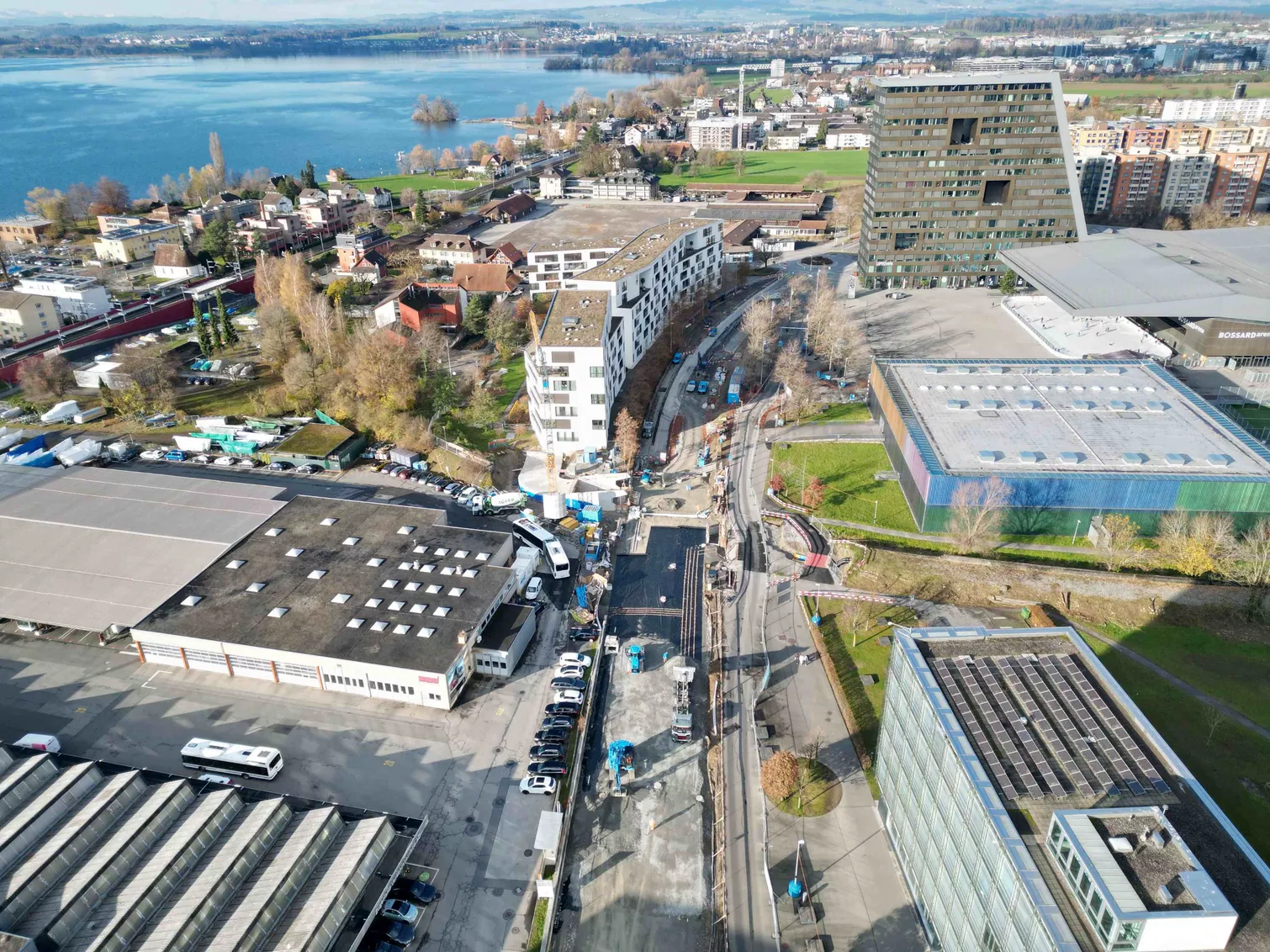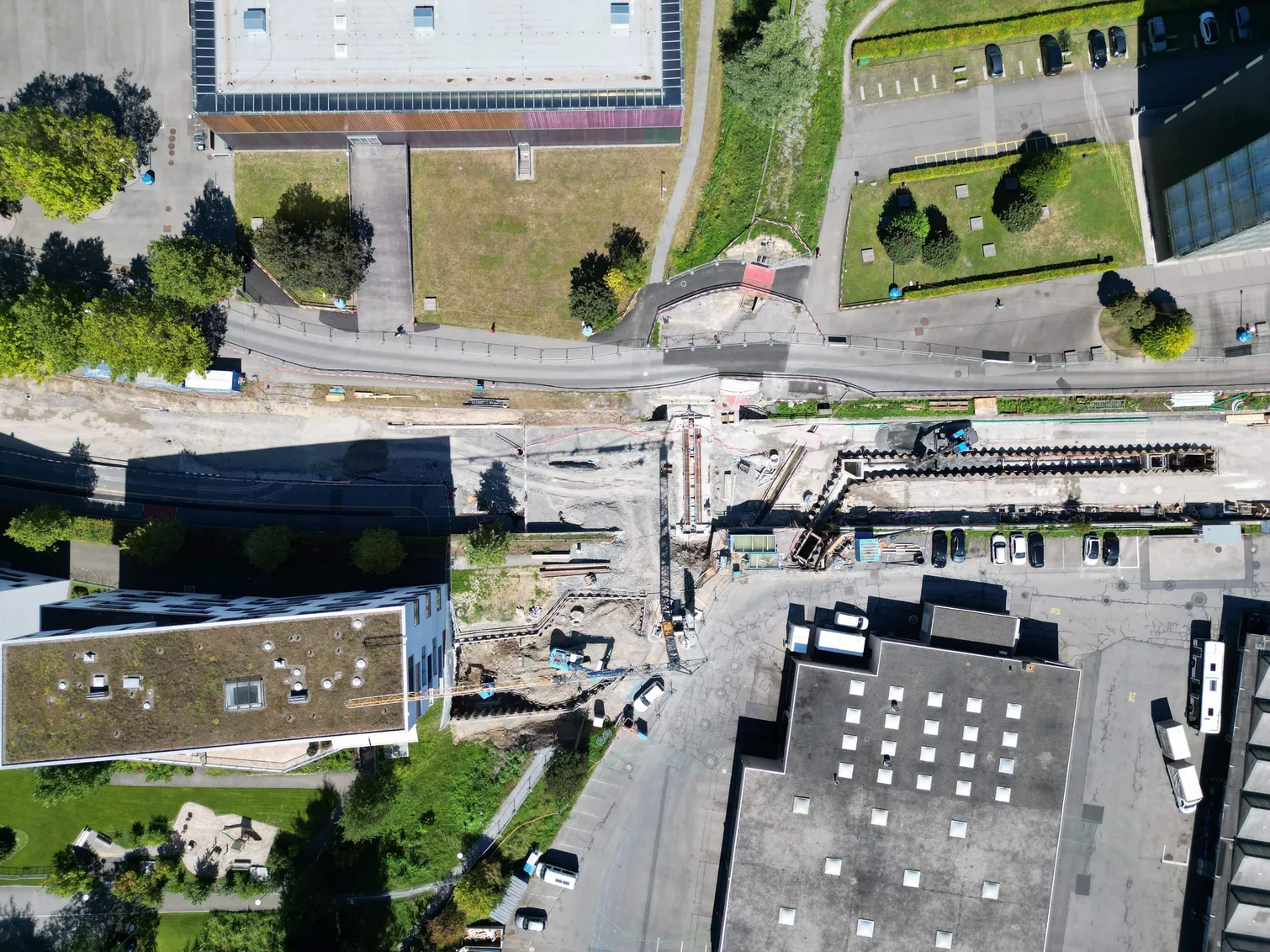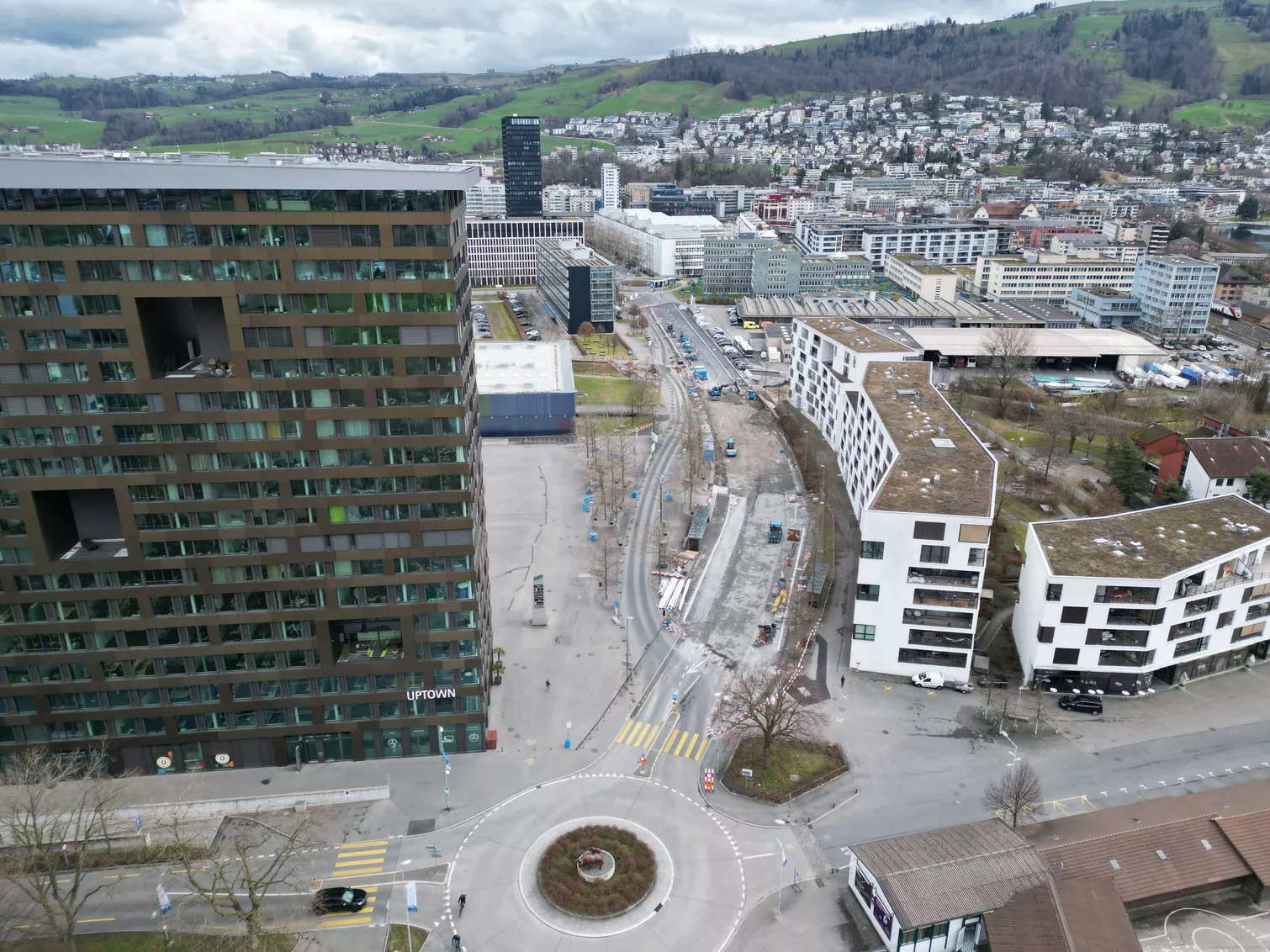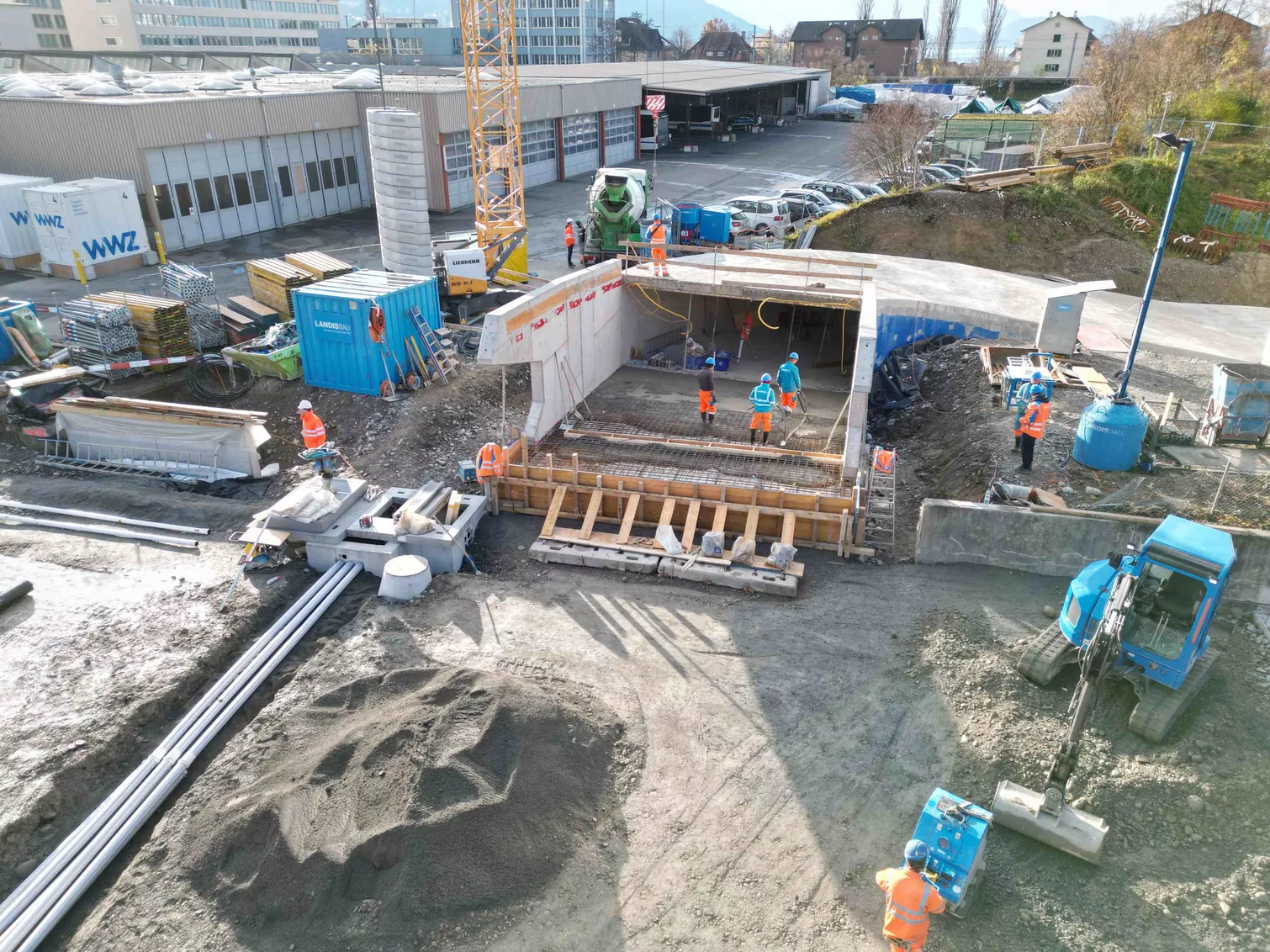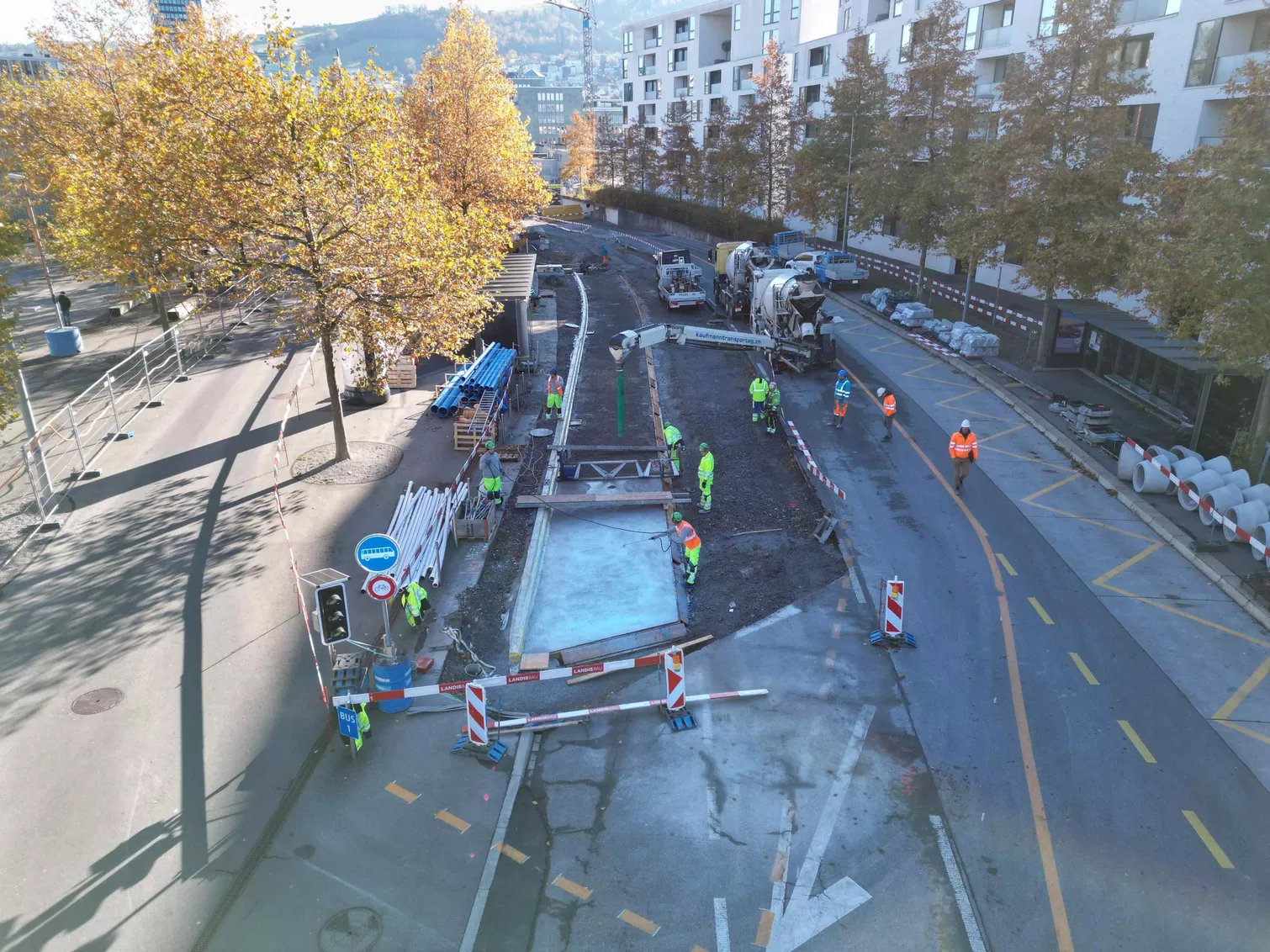Construction work on General-Guisan-Strasse in Zug has been underway since 2023. Gruner is supporting the project with civil engineering and road construction services.
Built in its current form in the late 1960s, General-Guisan-Strasse in Zug is now the focus of an ambitious project set to permanently alter the cityscape. For decades, trains on the SBB railroad line from Zug to Zurich via Affoltern am Albis used a road overpass to enter a railroad loop. This loop was decommissioned in the 1990s. Since then, the road underpass, which is below the groundwater level in a so-called "groundwater basin," has required regular and costly maintenance. Water increasingly seeped through the surface of the trough, creating hazardous conditions for road traffic in winter due to slipperiness. Filling in the groundwater basin and removing the railroad loop will now significantly enhance the townscape. The Gruner infrastructure team in Zug is responsible for all engineering design services.
Nature on its way back into the city
As part of the demolition work, the groundwater basin will be filled so that the road perfectly integrates with the surrounding area, which includes the vocational school, Bossard Arena, the cantonal administration center, and the ZVB main base. One challenge in the project involves the underground garage access for the neighboring Schutzengel residential complex, currently situated at the lowest point of the groundwater basin. This area would become inaccessible if the basin were filled. "The studies have shown that the best possible solution is to construct a completely new access road in the area of the former railroad loop," says René Bieri, Project Manager and Head of Department Planning Civil Engineering and Road Construction at Gruner Central Switzerland. The road section will also be enhanced with a pedestrian crossing at ground level, a cycle path, footpath, two bus stops, and underground containers. Fifteen trees and green areas will be planted along the 1.5-kilometer stretch of road. Rainwater will be allowed to seep directly from the street into the ground instead of into the sewage system, aligning with the "sponge city" concept, allowing the soil to absorb water. On hot days, the water evaporates through the plants, cooling the environment. By filling the basin, the Siehbach will flow unimpeded through the city into Lake Zug and reconnect with the ecologically significant "Schleife" dam, which was previously disrupted by the groundwater basin. Additionally, various utility lines already exposed due to the backfill will be addressed. The pipes installed in 2021 will now be fully connected as part of the "Circulago" heating and cooling network on General-Guisan-Strasse. In the future, they will link the WWZ headquarters with the "Unterfeld Plus" supply area and Lake Zug, from which most of the energy will be sourced from renewable resources.
Four disciplines involved
What is special about this project is the highly interdisciplinary cooperation. "Other disciplines are working on the project alongside the infrastructure team in Zug," says a pleased René Bieri. He lists road construction, civil engineering, environmental construction supervision, structural civil engineering and many more. It is extremely valuable to have such a broad range of expertise. "We are all pulling in the same direction and are extremely motivated to complete the project successfully," Bieri adds. This is now in sight. Following the start of construction work in mid-2023, the new section of road will be opened to traffic in early summer 2024.
Client
- Stadt Zug und WWZ Netze AG
Processing period
- 2022 - 2024
Services
- Fire safety planning
- pollutants
- Highway engineering
- Hydraulic engineering

